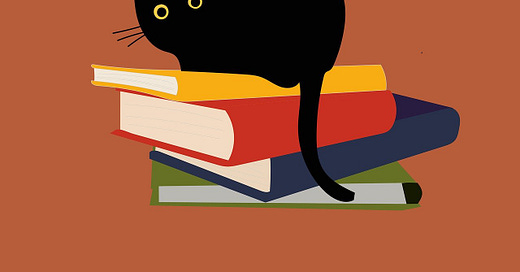5 books for bee friends
Marvel at wild bees, gather party-worthy fun facts and discover how to feed bees: Time for the reading nook.
Dear Climate Culinarians,
I still don’t know the exact role of birds in that “birds and bees” phrase, so I’m setting out to learn even more about … bees, of course. After all, this month’s newsletters are dedicated to bees and food. The connection between the two has become as clear as extremely filtered honey.
Say what now? Bees and Food: Why hives hit the highway (to hell?!) shows you to what extent bees are crucial to food production, getting many food plants’ flowers to turn into fruit and seeds. And in Bees and Food: What’s killing billions of bees? you’ll read about the challenges that drive massive bee die-offs, and actions you can take to save bees.
5 books full of bee buzz, nectar, and suspense
I love to share what I’ve been reading. And - maybe even more importantly? - what’s in my “books to read next” stack. Here’s my selection for bees (and other pollinators).
Learn what makes a bee a bee
Beepedia by Laurence Packer, with illustrations by Ann Sanderson (Princeton University Press, June 2025)
Canadian melittologist (= bee scientist) Laurence Packer explains bees from A to Z, with science and pop culture, threats and solutions. Along the way, you’ll pick up fun facts to share at your next party, including where the expression “the bee’s knees” comes from and why Napoleon Bonaparte chose the bee as his emblem when he became emperor.
Find out about the outdoor buzz
The Bees in Your Backyard. A Guide to North America’s Bees by Joseph Wilson and Olivia Messinger Carrill (Princeton University Press, 2015)
Curious what’s buzzing about while you’re hiking, strolling through a park, or enjoying your backyard? Biologists Joseph Wilson and Olivia Messinger Carrill will help, starting with more than 900 photos and tips to tell bees apart. Once you identified a bee, you can learn where it lives, how it gathers food, etc. Bonus for those who have a backyard: There is a whole chapter dedicated to action - specifically, how to attract bees to your backyard.
Grow bee food (and habitat)
100 Plants to Feed the Bees by Eric Lee- Mäder, Jarrod Fowler, Jillian Vento, and Jennifer Hopwood / Xerces Society (Storey Books, 2016)
Gardening for Biodiversity: Native Plants for the Northeast by Wild Seed Project (2025)
Take these two book recommendations with a grain of salt: The very best plants for bees are those that are native to your area, and these two might not touch on yours (find links to area-specific online guides in the “Take action” part of the 7/10/2025 newsletter). Both of these books were published by nonprofits, and they caught my attention because:
The pollinator nonprofit Xerces Society gets you going with 100 widely common herbs, shrubs, and trees that many pollinators visit. Their book is helpful for gardeners of all types, from landscapers to proud owners of a windowbox.
And Gardening for Biodiversity has such amazing illustrations! Just keep in mind that it refers to the Northeast region of the United States, and the Wild Seed Project - dedicated to encouraging people to grow native plants from wild seeds - will ask you for a donation at checkout (so there is a fundraising campaign linked to this book).
Get lost in a novel
The Bee Sting by Paul Murray (Farrar, Straus and Giroux, 2023)
Oh dear, am I really recommening a book that’s emphasizing (Title! Core scene!) the type of bee experience nobody has ever liked? Well, like much in this book, the bee sting may not be what it seems. Irish author Paul Murray delivers a 650 pages tome about a rural family of four grappling with the aftermath of the 2008 financial crisis. And that’s not the only crisis there. Both parents and both children get entangled in a mix of bad decisions, buried secrets, and bad luck, made worse by what they don’t know about each other. For instance, young son PJ’s school project figuring out the parents’ work’s carbon footprint makes cardealer Dickie gradually sink into … I think I’d better not tell you. I’ll reveal this, though: The finale shocked me.
Do you want to add beekeeper tales or other bee-related books to my stack? Share them with me and all the other Climate Culinarians in the comments!
What’s next? After all this talk about bees and flowers turning into nuts or veggies, I’ve developed quite an appetite. So stay tuned for a recipe. I got sticky fingers from honey trying my hands on a simple, but new … nope, you gotta wait until next week for a taste.
Read, eat, repeat!
Petrina
Climate Culinarians is a project by me, Petrina Engelke. I write about climate and food, and I help other writers turn their ideas into a book people want to read. In other words: I’m a journalist and a book coach. Read more about this newsletter & me here.
Thanks for reading Climate Culinarians! How about you start your own book club newsletter club?




Great list, thanks. Adding Beepedia to my list to read!